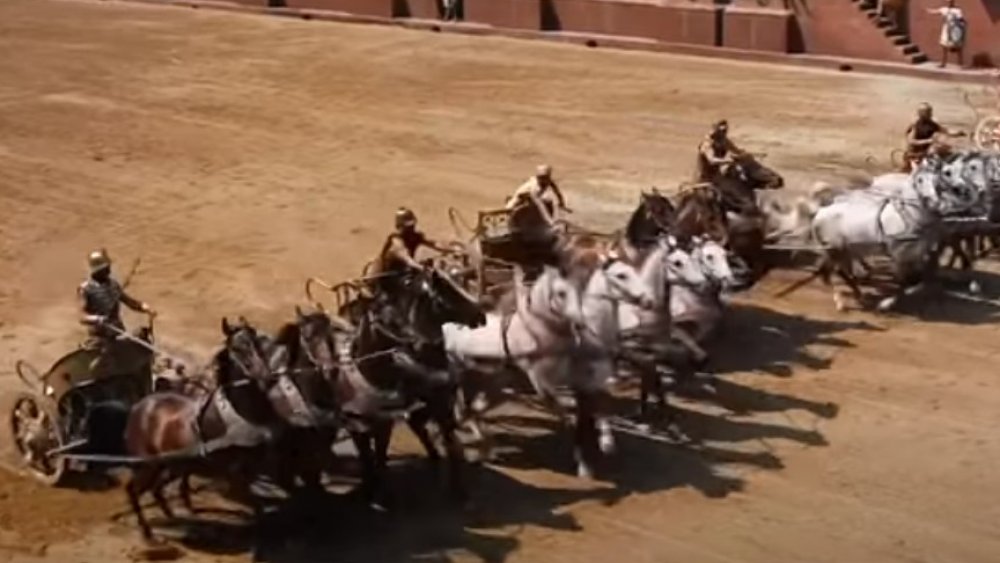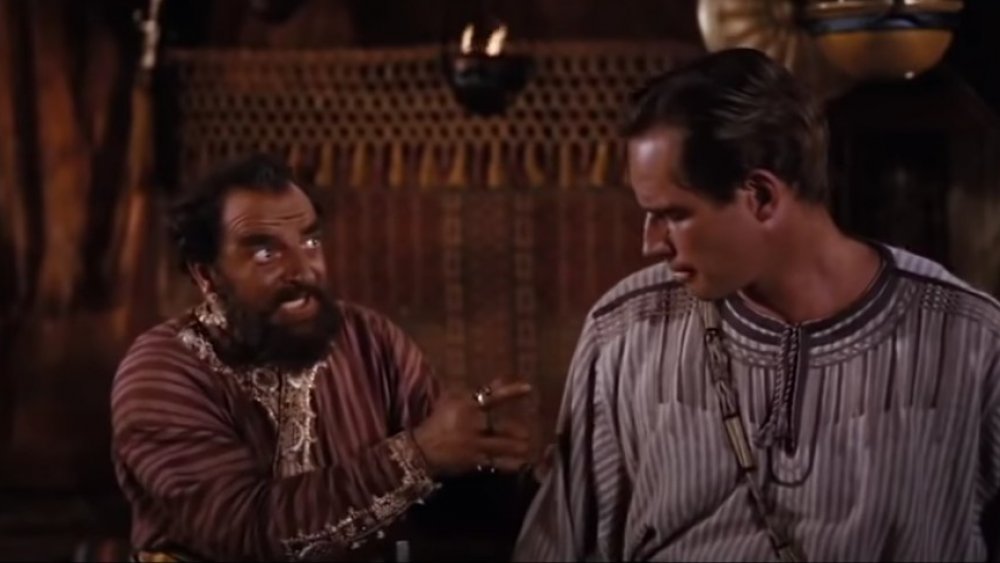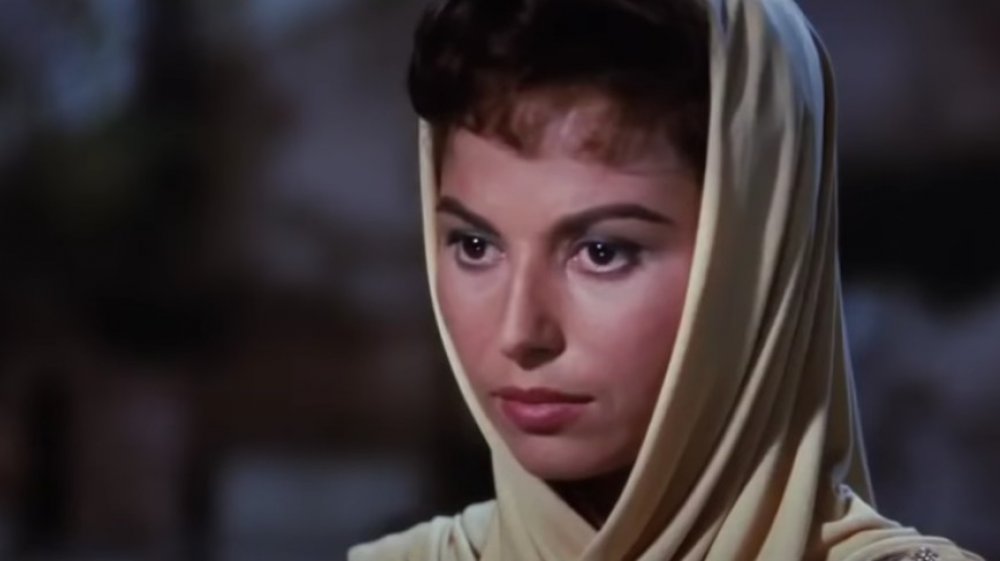What The Last Surviving Star Of Ben-Hur Is Doing Today
If anybody knows anything about Ben-Hur, it's chariot races. Every film version of the story (three movies, one mini-series) has as its centerpiece the great chariot race between the title character, Judah Ben-Hur, and his childhood frenemy, Messala. What is often ignored, starting with the title, is the author's subtitle: A Tale of the Christ. Even more often ignored is that the author, Lew Wallace, who served as a Union general during the Civil War, wrote at least part of the book while serving as the governor of New Mexico Territory in 1878-1881. He's the guy in the chair with whom Billy the Kid tried to strike a deal — unsuccessfully. (It's all about historical context, folks.)
The novel was published in 1880, says Encyclopedia Britannica, and was a huge success, even outselling Uncle Tom's Cabin, which up to that point outsold everything but the Bible. Wallace's historical novel set in the time of Jesus focused on common human emotions like grief, redemption, and white-hot revenge — and Roman chariot races. Boy howdy. Made for the big screen.
Both Hugh Griffith and Charlton Heston earned Oscars for the film
Others agreed. It was filmed and released as a silent in 1925, including chariots, and starring Ramon Novarro and Francis X. Bushman. But the real deal was 1959's Ben-Hur. It was an enormously complicated spectacle of a film, with a massive budget and month after month of shooting. Sets, costumes, nameless extras, horses, more horses, still more horses — and it paid off. The movie earned massive returns immediately, soon ranked only second to Gone with the Wind in terms of earnings. It cleaned up critically, too, setting a record for Academy Awards — sweeping 11 of them, including Best Picture and Best Director. Hugh Griffith took Best Supporting Actor, and the biggie — Best Actor — was awarded to Charlton Heston for his portrayal of Judah Ben-Hur. More than 60 years later, the film still gets included on lists of "Stuff Hollywood Actually Did Right" (phrased more elegantly, of course, but you know what we mean).
With all of those decades of cinematic water under the bridge (we prefer our metaphors mixed, not stirred, thank you very much) perhaps it will surprise absolutely no one that nearly every cast member has shuffled off this mortal coil.
Of the film's leads, only Haya Harareet survives (as of this writing)
Stephen Boyd, who played Judah's frenemy Messala, was just 45 when he died in 1977 while playing golf. Jack Hawkins, the Roman who liberates Judah, died in 1973, age 62. Hugh Griffith played the sheik for whom Judah races; he died in 1988, 67 years old. Cathy O'Donnell was just 46 when she died in 1970 — she played Judah's sister, Tirzah. Martha Scott played Judah's mother, Miriam; she died in 2003 at the age of 90. Charlton Heston died in 2008, age 84, also credited with performing as Judah Ben-Hur for an animated version of the story in 2003.
Of the main cast, it appears that only one, Haya Harareet, is still alive and kicking at age 88. She played Judah's love interest, Esther, and that seems to have been the pinnacle of her career as an actor (though she did get to meet former President Harry S. Truman in 1960, according to the Truman Library). She was born in what's now Haifa, Israel, and worked in Europe before her Ben-Hur performance. She made a handful of films after that, according to her biography on Turner Classic Movies, and branched out to screenwriting in 1967 for Our Mother's House, but her last screen credit was for a British film in 1974.


